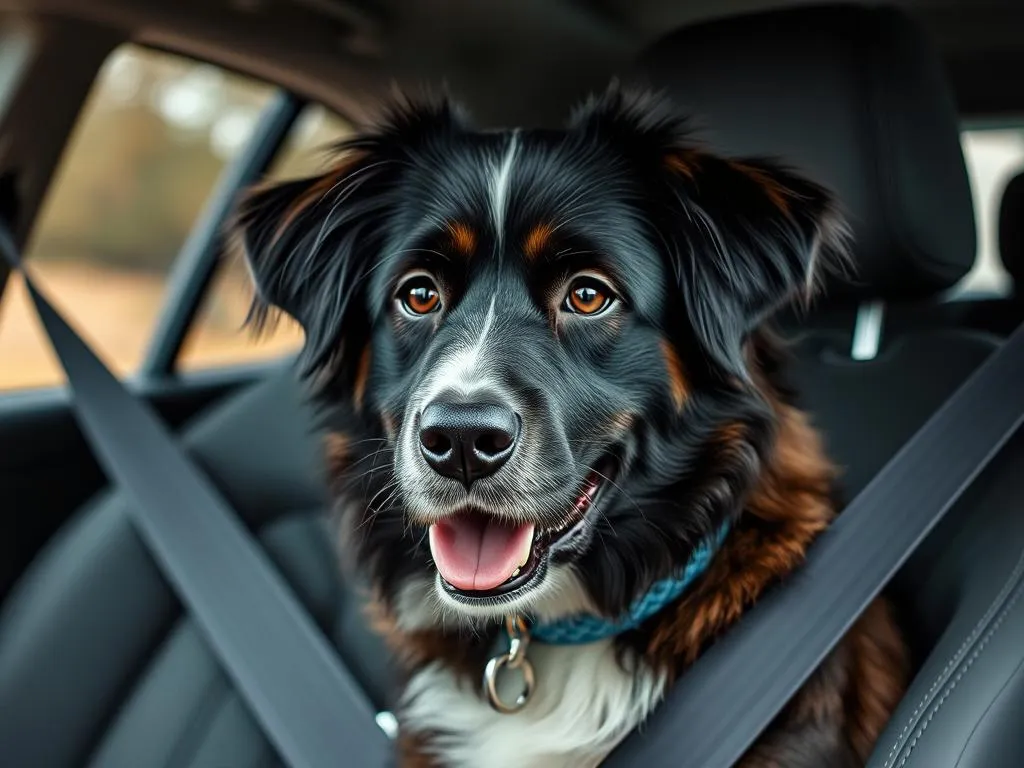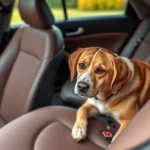
Introduction
In an age where pet owners prioritize the safety and well-being of their furry friends, ensuring the safety of pets during vehicle travel has become a crucial concern. Just as we buckle up for protection, the same principle applies to our dogs. Dog seat belts have emerged as an essential tool for ensuring that our pets remain secure and safe while on the road. This article aims to evaluate the safety of dog seat belts, delve into their significance, and provide valuable insights for pet owners looking to make informed decisions.
Understanding Dog Seat Belts
What are Dog Seat Belts?
Dog seat belts are specialized restraints designed to keep dogs secure in a vehicle. Unlike traditional harnesses, which may simply restrain a dog from moving around, dog seat belts are specifically engineered to attach to a car’s seat belt system, ensuring that the dog remains safe and stable during travel. They typically consist of a harness that fits around the dog’s body and a tether that clips into the car’s seat belt buckle.
Types of Dog Seat Belts
There are several types of dog seat belts available on the market, each catering to different needs and preferences:
-
Harness-style seat belts: These harnesses distribute pressure evenly across the dog’s body, making them a comfortable option. They are often adjustable and suitable for various dog sizes.
-
Clip-style seat belts: These consist of a simple strap that attaches directly to a dog’s collar or harness. While they are easy to use, they may not provide the same level of safety as harness-style options.
-
Dog car safety seats: Designed for smaller dogs, these seats elevate the pet, providing a clear view out of the window while securing them with a built-in harness. They can be a great way to keep smaller dogs safe during travel but may not be suitable for larger breeds.
Each type has its pros and cons, and selecting the right one depends on your dog’s size, behavior, and travel habits.
The Importance of Dog Seat Belts
Safety Statistics
The statistics regarding pet injuries and fatalities in car accidents are alarming. According to various studies, unrestrained pets can become projectiles in a crash, leading to severe injuries or death for both the pet and human passengers. In fact, it’s estimated that over 30,000 accidents involving pets occur each year, highlighting the necessity of using dog seat belts for safety.
Legal Requirements
In many regions, laws are evolving to address pet travel safety. Some states and countries require pets to be secured in vehicles, similar to how children must be buckled in. Failing to comply with these laws can result in fines and penalties. Moreover, in the event of an accident, not using safety restraints for pets can complicate insurance claims and liabilities.
Evaluating the Safety of Dog Seat Belts
Materials and Construction
The safety of dog seat belts largely depends on the materials used and the quality of construction. Look for seat belts made from durable, high-quality materials such as nylon or polyester, which can withstand considerable stress. Check for features like reinforced stitching, strong buckles, and adjustable straps to ensure a secure fit for your dog.
Crash Test Ratings
Just like human car safety devices, certain organizations conduct crash tests on dog seat belts to measure their effectiveness. Organizations such as the Center for Pet Safety evaluate products and provide ratings based on their performance in simulated crash scenarios. Reviewing these ratings can help you select a seat belt that has passed rigorous safety standards.
Expert Opinions
Consulting with veterinarians and pet safety experts can provide valuable insights into the effectiveness of dog seat belts. Many experts advocate for the use of these restraints, emphasizing that they significantly reduce the risk of injury during car travel. Their recommendations can guide you toward making a safer choice for your pet.
How to Choose the Right Dog Seat Belt
Dog Size and Breed Considerations
When selecting a dog seat belt, it is crucial to consider your dog’s size and breed. Larger breeds may require more robust restraints, while smaller dogs may benefit from harnesses designed for their size. Ensuring a proper fit is essential for both comfort and safety; a poorly fitting seat belt can lead to injury in the event of sudden stops or accidents.
Features to Look For
When shopping for a dog seat belt, prioritize essential features such as:
- Adjustability: A seat belt that can be adjusted will ensure a snug fit for your dog.
- Comfort padding: Look for belts with soft padding to prevent chafing during travel.
- Ease of use: A user-friendly design will make it easier to secure your dog before every trip.
Additionally, consider optional features that enhance safety, such as reflective materials for visibility during nighttime travel.
Customer Reviews and Recommendations
Before making a purchase, it’s wise to check customer reviews and testimonials. They can provide insights into the real-world performance of different dog seat belt brands. Look for products that have a track record of safety and high user satisfaction.
Proper Usage of Dog Seat Belts
How to Properly Fit a Dog Seat Belt
Fitting a dog seat belt correctly is vital for ensuring your pet’s safety. Follow these steps:
- Select the right size: Choose a seat belt that matches your dog’s size and weight.
- Adjust the harness: Ensure it’s snug but not too tight. You should be able to fit two fingers between the harness and your dog’s body.
- Secure the tether: Attach the tether to the car’s seat belt buckle, ensuring it locks in place.
- Check for movement: Ensure that your dog cannot move around excessively or escape from the harness.
Common mistakes include using a collar instead of a harness and failing to adjust the fit properly, both of which can compromise safety.
Training Your Dog to Use a Seat Belt
Introducing your dog to a seat belt may require some training. Here are some tips:
- Start slowly: Allow your dog to explore the seat belt and harness while the car is stationary.
- Use positive reinforcement: Reward your dog with treats and praise for calm behavior during the fitting process.
- Practice short trips: Begin with short drives to help your dog acclimate to being restrained.
Safety Precautions During Travel
In addition to using dog seat belts, consider these additional safety precautions during travel:
- Avoid distractions: Keep your dog calm and prevent them from distracting the driver.
- Keep windows closed: Allowing your dog to hang their head out of the window can lead to injuries or escape.
- Plan for breaks: On long trips, schedule regular breaks for your dog to stretch and relieve themselves.
Alternatives to Dog Seat Belts
Dog Car Seats
For small dogs, dog car seats can provide a safe and comfortable option. These seats elevate the dog, allowing them to see out the window while keeping them secured with a harness. They can be more stable than seat belts in certain scenarios but may not be ideal for larger breeds.
Crates and Carriers
Using crates and carriers can also be a safe alternative for transporting dogs in vehicles. They provide a contained space that can prevent distractions and injuries. However, ensure that the crate is secured properly in the vehicle to avoid sliding during sudden stops.
Conclusion
In conclusion, the use of dog seat belts is an essential component of pet travel safety. They provide a practical way to secure your dog and mitigate the risks associated with car accidents. By understanding the different types available, evaluating their safety, and choosing the right one for your pet, you can make informed decisions that prioritize your dog’s safety on the road. Remember, when it comes to traveling with your furry friend, their safety should always come first.









